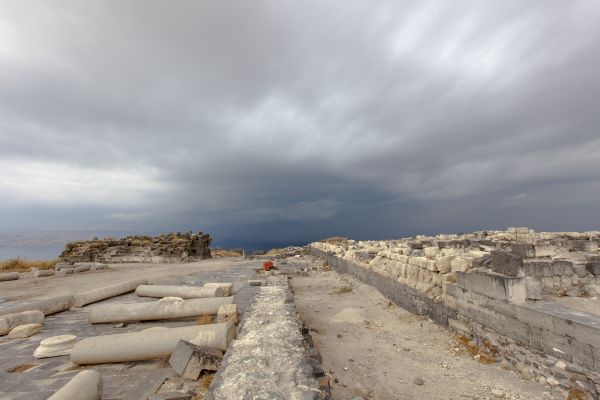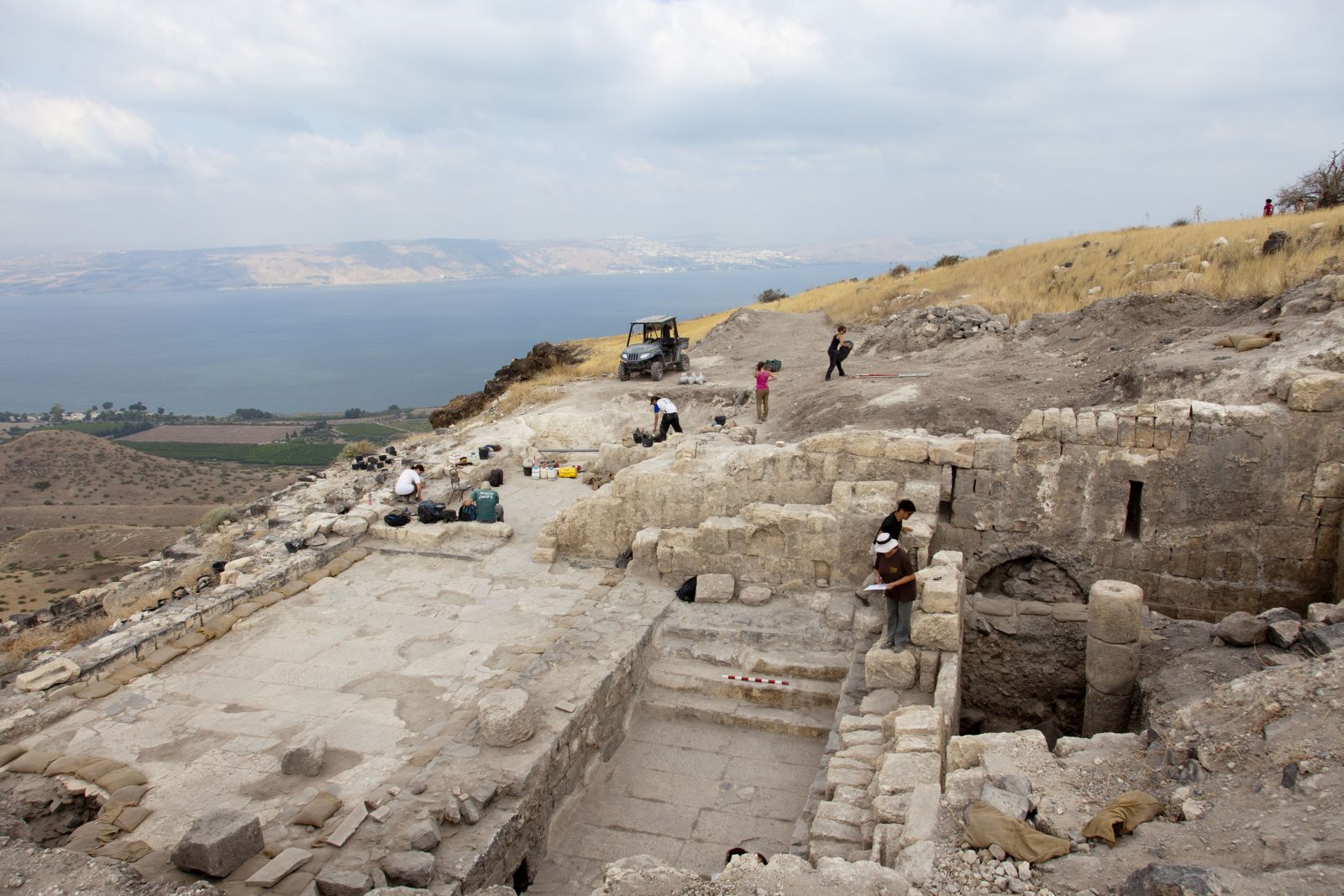What other secrets will University of Haifa archeologists unearth at Hippos-Sussita National Park?
Anitochia Hippos, an ancient Roman city located on a hill overlooking the Sea of Galilee, may be one of the most remarkable and well-preserved archeological sites in the Middle East.
A team led by Dr. Michael Eisenberg of the Zinman Institute of Archeology has made recent headlines in the international media with two major archeological discoveries at the site. The first, a 2,000-year-old bronze mask of the mythical Greek god Pan, is the largest mask of its kind ever found. The mask made Biblical Archeology’s “The Top 10 Biblical Archeology Discoveries in 2015.” The second finding, a monumental Roman Gate, suggests that the gate structure leads to a large, sacred ritual compound connected with the cult of Pan or one of the rustic gods.
Antiochia Hippos, believed to have been founded around 160 BC during the height of the Hellenistic Age, today is part of the Hippos-Sussita National Park. In its heyday, the city dominated a large region and was a famous city of the Decapolis, a region of 10 Greco-Roman poleis on the eastern border of the Roman Empire. Destroyed in 749 CE by a devastating earthquake, Hippos lay buried and undisturbed until excavation began in 2000.
The site’s enduring basalt construction and relatively isolated location atop Mount Sussita has preserved it much like it was left in the 8th century, making it one of the most remarkable classical sites in the Middle East for archeologists to explore.
According to Dr. Michael Eisenberg who heads the expedition at Hippos, “The mask and now the monumental gate near where it was found, are continuing to fire our imaginations. This massive gateway nestled between two towers measuring over 20 feet high is evidence of an extensive mysterious compound and possibly a sanctuary for the worship of Pan or his fellow Dionysus, the god of wine. What rituals took place here at Hippos? To answer that question we will have to expand our excavation work and enter it, which may take years to expose.”
The current excavation season opened in July with 70 participants from Israel and around the world. Dozens of academics and volunteers arrived from the USA, the UK, Japan, Australia, France, Germany and Holland for the dig; a large number of them are returning volunteers.
“Mysterious gateway outside the city walls (does it lead to a sacred ritual compound?), largest bronze mask of the Greek god Pan ever to be found, seven churches and unique ‘bastion’ are all part of the ancient monumental complex found at Hippos.” - Dr. Michael Eisenberg of the University of Haifa, Director of the Hippos-Sussita Excavation Project

The Pan mask found at Hippos; it weighs over 11 pounds and measures almost 12 inches high and nearly as wide.
The Zinman Institute of Archeology
Research and excavation work at the Zinman Institute of Archeology focuses on four major chronological periods: Prehistoric, Biblical, Classical and Middle-Ages. Founded in 1988 through the generous donation of longstanding University of Haifa friends, Betty and Philip Zinman, it is currently headed by Prof. Mina Weinstein-Evron.
Other Major Excavation Projects
> Mount Carmel Caves Project at Tabun, Jamal, el-Wad and Skhul on Mount Carmel, directed by Prof. Mina Weinstein-Evron
> Tel Dor Excavation Project on the Carmel Mediterranean Coast, directed by Prof. Ayelet Gilboa
To continue its excavations, surveys, and theoretical studies the Zinman Institute of Archeology is in need of further support. For more information please contact the Office of the Vice President for External Affairs and Resource Development.



